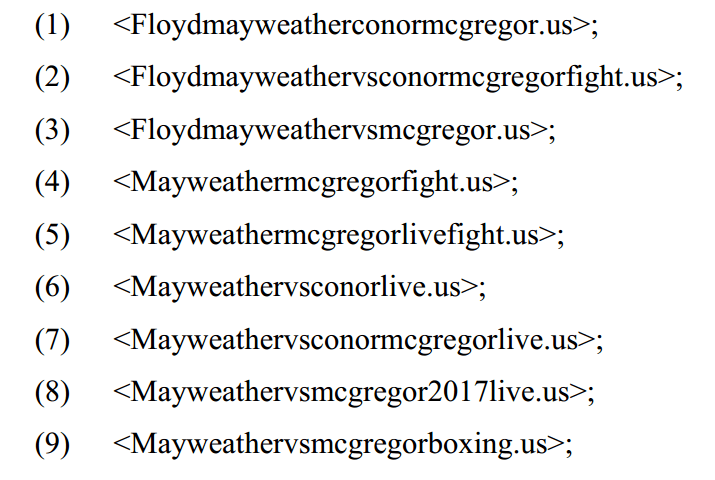 On June 2, a collection of Canadian telecoms giants including Bell Canada, Bell ExpressVu, Bell Media, Videotron, Groupe TVA, Rogers Communications and Rogers Media, filed a complaint in Federal Court against Montreal resident Adam Lackman, the man behind TVAddons.
On June 2, a collection of Canadian telecoms giants including Bell Canada, Bell ExpressVu, Bell Media, Videotron, Groupe TVA, Rogers Communications and Rogers Media, filed a complaint in Federal Court against Montreal resident Adam Lackman, the man behind TVAddons.
They claimed that by developing, hosting, distributing or promoting Kodi add-ons, Lackman infringed their copyrights.
On June 9 the Federal Court handed down an interim injunction against Lackman which restrained him from various activities in respect of TVAddons. The process took place ex parte, meaning in secret, without Lackman being able to mount a defense.
The plaintiffs were also granted an Anton Piller order, a civil search warrant that granted access to Lackman’s premises and allowed him to be interrogated.
As previously reported, the plaintiffs abused the process and only later did a court recognize that the search was designed as both a fishing exercise and a means to take down TVAddons, in advance of any trial on the merits of the case.
In the meantime, with the process grinding through an early appeal, the plaintiffs’ aim of destroying TVAddons has been at least partially achieved. After prolonged downtime, Lackman recently brought the site back under a new URL, TVAddons.co. However, he informs TF that serious damage has been done to a project that previously enjoyed great momentum.
“Google is the most popular site on the internet. If Google was down for a day, you’d check back tomorrow. If it was down for a week, you’d check back a week later. If it was down for a month, maybe you’d try once in a while,” Lackman says.
“However, if Google was down for more than six months, would you return in a year from now? Probably not. And that’s Google, not a small community site like TVAddons.”
Some people are coming back to the site now, but in nowhere near the volumes it previously enjoyed. Here’s a traffic analysis for a typical day at TVAddons.ag before the takedown.
TVAddons.ag daily traffic, before the takedown
And here is how the traffic for TVAddons.co looked a few days ago, a little two weeks after its revival and ten weeks after the initial takedown.
<TVAddons.co traffic, after bringing the site back
Part of the problem is not being able to get in touch with former users. In addition to taking control of TVAddons’ domains, the legal process also deprived the site of its social media accounts.
For example, TVAddons’ original Twitter account is now dormant. It still has 141K followers but with its passwords in the hands of lawyers, Lackman has been forced to open a new account, TVAddonsco. However, he’s only been able to attract just over 8,000 followers.
Facebook tells a similar story. With no access to the old account (which had 174,229 likes), the new account facebook.com/tvaddonsco is stalling at around 1,600. The situations on YouTube and Instagram are just as bleak.
“They’ve completely muzzled us, there was never anything questionable on our social media, seizing it without actually winning a lawsuit against us is nothing less than censorship,” Lackman says.
“Since we never required user registration, we don’t have the ability to reach the majority of our users without having access to our old social media accounts and notification system, which doesn’t work without our domain name being active.”
Also seized were TVaddons’ Feedburner account, which was used to manage the site’s 100,000 RSS feed subscribers.
“It was in the same account as Google+ and YouTube so we lost that too. We could have easily used it to forward our RSS feed and keep all the subscribers otherwise,” Lackman adds.
This has left TVAddons having to do its best to spread the details of its new locations via social media and a contest that has thus far gained more than 87,000 entries and may be helping things along.
While it’s now common knowledge that many TVAddons-related domains and accounts were seized following the search, Lackman now reveals that other non-connected projects were affected too. Included were the social media pages of several unrelated businesses, the domain name of a hosting website that was around seven years old, and an entirely legal “cord-cutting” information resource.
“Since the cord-cutting phenomenon conflicts with their business interests, seizing that specific social media page effectively destroyed their direct competition,” Lackman says.
“The plaintiffs are trying to destroy their competition rather than innovating. TVAddons provided a lot of legitimate competition for them in terms of content for cordcutters, they’re trying to keep a grasp on the market at any cost.
“Their failure at innovating can be immediately demonstrated by the fact that the NFL recently canceled all broadcast contracts with Canadian TV operators, in favor of DAZN, a new legal sports streaming service that charges half the price they did, with way more content than their sports packages ever offered.”
But despite the setbacks, Lackman appears determined to continue not only with the resurrected TVAddons, but also the legal fight against the Canadian broadcasting giants intent on his destruction.
At the time of writing the site’s fundraiser has generated more than $27,000 in 15 days but TF understands that this might only be 5 to 10 percent of the final sum required when all bills are counted. It’s hoped that new methods of donating and assistance from friendly website operators might give the campaign an additional boost but in the meantime, Lackman is expressing gratitude for the efforts so far.
I am honoured to see so much support from so many people whom I have never met. Thank you and G-d Bless you all.
— Adam Lackman (@adamlackman) August 4, 2017
It’s hard to say whether TVAddons will once again reach the heights achieved at its peak but after taking years to build up a following, the odds are certainly stacked against it.
Source: TF, for the latest info on copyright, file-sharing, torrent sites and ANONYMOUS VPN services.



 When major movie and TV companies discuss piracy they often mention the massive losses incurred as a result of unauthorized downloads and streams.
When major movie and TV companies discuss piracy they often mention the massive losses incurred as a result of unauthorized downloads and streams.

 Most people who create something like to be credited for their work. Whether you make a video, song, photo, or blog post, it feels ‘right’ to receive recognition.
Most people who create something like to be credited for their work. Whether you make a video, song, photo, or blog post, it feels ‘right’ to receive recognition. 


 Earlier this year, a group of well-known labels targeted
Earlier this year, a group of well-known labels targeted 
